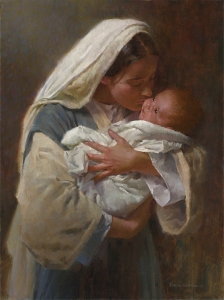 Although many people think of the “Twelve Days of Christmas” as the days leading up to Christmas, in fact they are the twelve days from Christmas to Epiphany. So, this year I started a #12DaysOfAdvent thread on Twitter and Facebook, marking the days leading up to Christmas with twelve Scripture texts traditionally associated with Advent, anticipating Israel’s Messiah and God’s coming reign on earth bringing justice and peace and joy for all peoples.
Although many people think of the “Twelve Days of Christmas” as the days leading up to Christmas, in fact they are the twelve days from Christmas to Epiphany. So, this year I started a #12DaysOfAdvent thread on Twitter and Facebook, marking the days leading up to Christmas with twelve Scripture texts traditionally associated with Advent, anticipating Israel’s Messiah and God’s coming reign on earth bringing justice and peace and joy for all peoples.
Here they are, from #12DaysOfAdvent to #MerryChristmas! Links take you to the full Scripture texts.
Dec. 13: “In days to come the mountain of the Lord’s house shall be established… they shall beat their swords into plowshares, and their spears into pruning hooks; nation shall not lift up sword against nation, neither shall they learn war any more.” –Isa 2:1-5 #12DaysOfAdvent
Dec. 14: “The people who walked in darkness have seen a great light… For a child has been born for us, a son given to us; authority rests upon his shoulders; and he is named Wonderful Counselor, Mighty God, Everlasting Father, Prince of Peace.” –Isa 9:1-7 #12DaysOfAdvent
Dec. 15: “A shoot shall come out from the stump of Jesse, and a branch shall grow out of his roots. The spirit of the Lord shall rest on him… with righteousness he shall judge the poor, and decide with equity for the meek of the earth.” –Isa 11:1-10 #12DaysOfAdvent
Dec. 16: “Then the eyes of the blind shall be opened, and the ears of the deaf unstopped; then the lame shall leap like a deer, and the tongue of the speechless sing for joy. For waters shall break forth in the wilderness, and streams in the desert.” –Isa 35:1-10 #12DaysOfAdvent
Dec. 17: “A voice cries out: ‘In the wilderness prepare the way of the Lord, make straight in the desert a highway for our God…’ Get you up to a high mountain, O Zion, herald of good tidings…say to the cities of Judah, ‘Here is your God!’” –Isa 40:1-11 #12DaysOfAdvent
Dec. 18: “How beautiful upon the mountains are the feet of the messenger who announces peace, who brings good news, who announces salvation, who says to Zion, ‘Your God reigns.’” –Isa 52:7-10 #12DaysOfAdvent
Dec. 19: “The spirit of the Lord God is upon me… he has sent me to bring good news to the oppressed, to bind up the brokenhearted, to proclaim liberty to the captives, and release to the prisoners; to proclaim the year of the Lord’s favor.” –Isa 61:1-4 #12DaysOfAdvent
Dec. 20: “But you, O Bethlehem of Ephrathah…from you shall come forth for me one who is to rule in Israel, whose origin is from of old, from ancient days. And he shall stand and feed his flock in the strength of the Lord…and he shall be the one of peace.” –Mic 5:2-5a #12DaysOfAdvent
Dec. 21: “In those days and at that time I will cause a righteous Branch to spring up for David; and he shall execute justice and righteousness in the land.” –Jer 33:14-16 #12DaysOfAdvent
Dec. 22: “Sing aloud, O daughter Zion; shout, O Israel! Rejoice and exult with all your heart, O daughter Jerusalem! …I will save the lame and gather the outcast, and I will change their shame into praise and renown in all the earth.” –Zeph 3:14-20 #12DaysOfAdvent
Dec. 23: “My soul magnifies the Lord, and my spirit rejoices in God my Savior… He has brought down the powerful from their thrones, and lifted up the lowly; he has filled the hungry with good things, and sent the rich away empty.” –Luke 1:46-55 #12DaysOfAdvent
Dec. 24: “Blessed be the Lord God of Israel… By the tender mercy of our God, the dawn from on high will break upon us, to give light to those who sit in darkness and in the shadow of death, to guide our feet into the way of peace.” –Luke 1:67-79 #12DaysOfAdvent
Dec. 25: “I am bringing you good news of great joy for all the people: to you is born this day in the city of David a Savior, who is the Messiah, the Lord.” –Luke 2:1-20 From #12DaysOfAdvent to #MerryChristmas!








